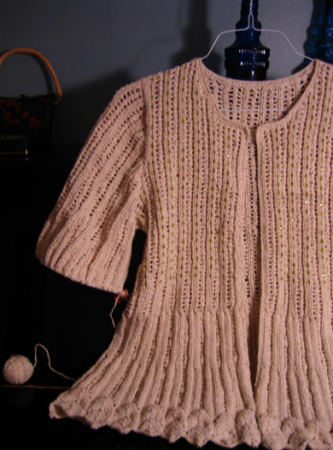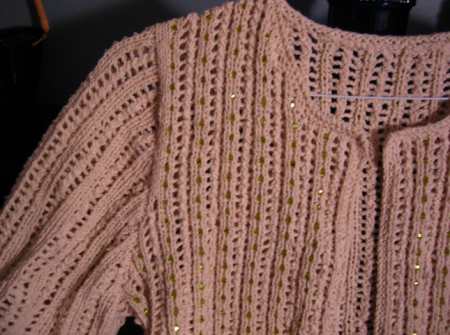The case of the red leg
My energy level this evening is not what one might hope, given my age and general level of fitness, and it is all because I made a very, very bad error last night involving my “bedtime reading.”
Lately, I’ve become obsessed with popular books written by doctors about the medical profession. My own dissertation research has a history of medicine/history of public health thread, my grandfather was a doctor, and I am generally fascinated with how the medical profession operates (no pun intended), so these books are a natural draw.
First I blazed through Pauline Chen’s Final Exam, about how poorly doctors and modern, scientific medicine deal with mortality and the dying patient. Very nicely crafted. Then I turned to Sherwin Nuland’s How We Die. (Keep reading this genre of books and trust me, you will notice a thematic pattern developing. And alarming thematic pattern…) Also a very interesting book in spite of Nuland’s tendency to veer nauseatingly into the realm of the maudlin from time to time.
I only accept the maudlin when it has to do with dogs.
Hey, you wanna stuffed goose? I happen to have one right here.
All this prepared me, or so I thought, for Atul Gawande’s Complications, the first of his two books about doctoring. The second just came out in hardback and is called Better.
As in, “You better not read this right before you go to bed.”
Atul Gawande is an astoundingly accomplished person, the kind of guy who makes you wonder what it is you do with your time, really, because you sure as shootin’ aren’t wringing as much achievement and just downright excellence out of every day as my man Atul. Not only is he a general and endocrine surgeon at Brigham and Women’s Hospital in Boston, he is also an assistant professor at the Harvard School of Public Health, and an assistant professor of surgery at Harvard Medical School.
His Wikipedia entry coolly notes that in addition to these prestigious professional posts, Atul “has written extensively on medicine and public health for The New Yorker magazine and the online magazine Slate. He has also written for New England Journal of Medicine. His essays have appeared in The Best American Essays 2002 and The Best American Science Writing 2002. His book, Complications: A Surgeon’s Notes on an Imperfect Science was a National Book Award finalist. In 2006 he was named a MacArthur fellow.”
A MacArthur fellow. A recipient of a so-called “Genius Grant.”
That has to feel good. I wish someone would certify me as a genius.

I knit this sweater AND I’m writing a dissertation. Plus I am an amateur dog trainer and I make a very fine Jell-O salad. And did I mention that I routinely and uncomplainingly perform feats of strength like removing sunken paving stones from the yard assisted only by a shovel and a “can-do” attitude?
It’s hard to explain why I have been overlooked by the committee year after year, but you know how political these things can be.
But I digress. Let’s just say that I admire Dr. Gawande and I think his first book is quite well-written, but it is, how shall I put this?, unsparing in its use of medical detail.

Knitting detail. See, I know from detail.
You may remember that medical details are not something that I tolerate especially well. How poorly do I tolerate this kind of information? Well, I once actually fainted when a friend told me in detail about her experience of giving birth to her daughter. And you will note that I myself have no children of my own today. Just coincidence? I don’t think so.
Moving on, however, I nonetheless cannot stop reading Gawande’s book, although I learned quickly not to try to read it on my lunch break. But last night as I settled in for my bedtime reading, I thought, “What could be the harm? This is so fascinating!”
Enter the chapter entitled The case of the red leg. The case of the red leg involved a woman in her early twenties who comes to Gawande’s hospital with a red leg and to all appearances, a skin infection called cellulitis. But Gawande, being a genius and all, has a bad feeling about her red leg. A very bad feeling.
He and the other docs convince her to have the tissue biopsied and they find—brace yourselves—that she actually has necrotizing fasciitis. Yeah, the flesh-eating bacteria! Incredibly rare, incredibly dangerous, often deadly.
I don’t know about you, but…FLESH-EATING BACTERIA? Oh my God!
I should have quit reading right there. What was I thinking? Instead, I forged ahead, reading about how they decided not to amputate her leg (the standard treatment…I mean, that’s how bad these flesh-eating bacteria are, people!) and instead did four nightmarish surgeries to debride (a more genteel word for “ruthlessly cut out”) all the muscle and tissue in her leg that the bacteria had destroyed.
You can read the details for yourself. I would even go so far as to recommend this book to you.
Just take my advice: don’t read it after 4 p.m.
April 12th, 2007 at 10:42 pm
Oh my gosh, Complications is one of my favorite books ever. Writing academically rigorous books that has some relevance to the public?? Nothing short of audacious!
So have you started Better? I worry I’ve already read most of it in the New Yorker, but probably I have to buy it anyway.
April 13th, 2007 at 2:28 am
Gorgeous sweater! I don’t want to think about the book. 😛
April 13th, 2007 at 6:38 am
Well, Complications had better be good, because I’ve just ordered it from Amazon. Normally I avoid medical books in case I turn into one of those women who talks incessantly about her operations (what a friend of my mother’s used to call ‘organ recitals’), but this sounds good. I made an exception for Oliver Sacks too, and the semi-divine Roy Porter. Speaking of the history of medicine, have you read Wendy Moore’s The Knife Man, biog of John Hunter? Outstanding.
Outstanding sweater too, by the way.
April 13th, 2007 at 8:43 am
I’ve read some of Gawande’s New Yorker pieces. Fascinating but Definitely not bedtime reading. Why is it that so many academics (in all fields) are dismissive of colleagues who write literate, rigorous pieces for the general public? Especially since these are the same folks who are so (rightly) contemptuous of the pseudo-science and other inaccurate drivel that pervades so much of popular non-fiction. Ach, I’m ranting.
Consider yourself nominated for that MacArthur Grant. You train dogs? And they do what you say? That should qualify you right there. The knitting and the academic stuff are just gravy. Mine train me. They know what all the words mean but comply only when it suits them. There is an eloquent body language that says “I hear you, but I’m busy, maybe later.” My girl also has one (since the day we brought her home) that says “Don’t wanna, not gonna, can’t make me.” Sigh.
April 13th, 2007 at 9:48 am
(I’m not even gonna mention the whole red leg thing.)
But…the sweater!?! You ARE are a genius! (or, maybe you’re a genie?) It’s gorgeous. I mean, beautiful beyond words. I’ve never knit anything with beads – and never really wanted to, either. “Til now, that is. Oh, be still my heart!
April 13th, 2007 at 10:01 am
Oh, Ellen, you never disappoint. There’s no telling what you’ll be talking about next, but it never fails to amuse, and sometimes even educate!
April 13th, 2007 at 3:55 pm
Ahh, Minnie is looking gorgeous. You seem to have gotten the mouse to cooperate the rest of the way. She looks very elegant, not to mention sparkly. Sort of an Edwardian style; nice!
As for me, I’ll pass on “Complications”, thank you; I don’t even watch medical shows on TV. (Ok, except for Grey’s Anatomy, which a friend deviously got me into for the people, and I close my eyes during a lot of the medical scenes. Nnnghghhh.) But a book I did love – although this sounds totally morbid – was Jessica Mitford’s “The American Way of Death”, her 1963 expose’ on the American funeral industry. While definitely a little more knowledge than you want sometimes, a lot of it is.. well, pretty damned hilarious. Plus infuriating. And eye-opening. I even read it late at night, embalming chapter and all, and didn’t get the creeps. (She warns you where to skip if you want to for that section. No, I didn’t. [g] And oh man, just checked Amazon, there’s an updated version, yet. Hmm.) Anyway, you just might want to check it out. 😉 I promise; no flesh-eating bacteria. Of *live* bodies, that is. Plus it certainly makes you aware of what kind of sharpie practices could lie in wait. Uh, so to speak.
April 13th, 2007 at 4:11 pm
That book sounds good, even in the face of the detailed descriptions. My husband adores Oliver Sacks. Maybe I should get him this.
April 13th, 2007 at 8:34 pm
That pink sweater is stunning – so is the cute dog!
April 14th, 2007 at 9:33 pm
Of course you deserve some kind of award for all that. At least a really cold brew after digging up the last stone!
Nope, can’t say that I’ll read that particular book. DD actually had cellulitis on her forearm and yes, it was debrided. In my book, she deserves a medal for getting through the whole thing in a reasonably adult way (and she was in 5th grade at the time).
April 16th, 2007 at 2:21 pm
Wow, I’m in awe. I go away for a month and hardly knit up a thing. Meanwhile, you’ve been turning out this lovely, lovely sweater. And writing a dissertation (jealously again). And making jell-o salads (well…). Genius!!
And that book with flesh-eating bacteria? I had the same kind of terrifying feeling when, some years ago, I accidentally read a book about having children. Humans are crazy survivors.